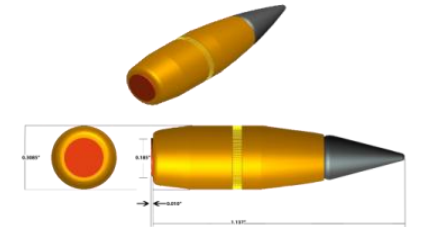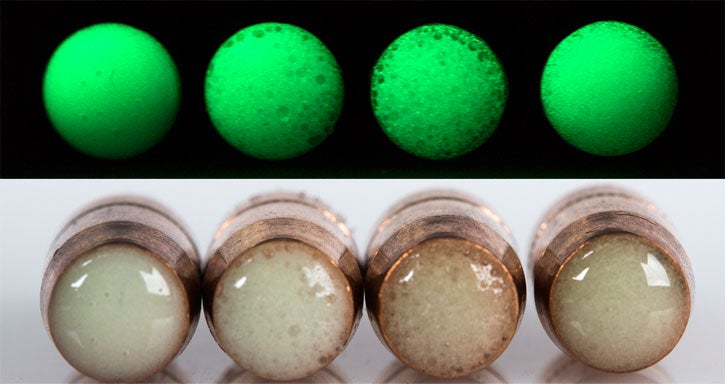Yesterday, we discussed the past, present, and future of infantry small arms calibers. That post was a highly introductory one, and there’s much, much more ground to cover on that subject. Today, we’ll talk about a technology that didn’t quite make it into yesterday’s discussion.
That technology is the Army’s non-incendiary limited angle visibility tracer round, called the “One-Way Luminescence” (OWL) tracer. Conventional tracers use consumable pyrotechnic compound inside the base of the bullet to produce a bright flash that marks the trajectory of the projectile in flight, allowing for aiming corrections and dramatically improving hit probability for machine guns over longer ranges. Tracers have been an essential military ammunition type since the early 20th Century, but their incendiary-based technology imposes a number of limitations on the ammunition configuration as a whole. Because they must contain enough pyrotechnic compound to burn throughout their flight, they tend to be longer than their corresponding ball rounds. This additional length can limit the aerodynamic characteristics of both tracer and ball projectiles, if the tracer approaches the maximum possible spin-stabilizable length (about a 7:1 length to diameter ratio, although for military projectiles it is closer to 5.5:1 due to additional considerations). Also, designing incendiary tracer rounds to closely match the trajectory of ball, AP, and other types of ammunition is a serious challenge for engineers, and in practice tracer rounds often given only an approximation of the points of impact for ball ammunition. Finally, incendiary tracer rounds are visible not only to the gunner and his team, but to the enemy being fired upon, as well.

OWL-type non-incendiary tracers can be applied to the bases of standard ball ammunition, and improve the barrel life of the weapons firing them, while also bringing a whole host of other benefits.
OWLs promise to substantially improve this situation. Instead of using incendiary compound, OWL tracers utilize an inert glowing substance applied to the base of a standard ball projectile. The luminescence of this substance is activated during firing, either by the heat, pressure, or other side effect, and in theory provides a trace for the gunner that can be used day or night, in any condition. Not only does this avoid the length problems of conventional tracers, it also creates the possibility for every single round fired to trace, removing the discrepancy in trajectory between tracers and other types of ammunition. This also eliminates one-in-six less terminally effective dedicated tracer bullets from the belt or magazine and replaces them with more effective standard projectiles. When combined with new EPR-type projectiles, OWLs also offer one unified ball/tracer/AP load, greatly improving the consistency and effectiveness of the projectiles being sent downrange while significantly simplifying logistics.
The most significant benefit of OWL tracers though, is their eponymous quality of being only visible through an approximately 30 degree arc from the base of the bullet. This makes it extremely difficult for the enemy forces being fired upon to see the incoming rounds and avoid them or return fire, which, needless to say, offers a huge advantage for US and allied forces.
 Your Privacy Choices
Your Privacy Choices

